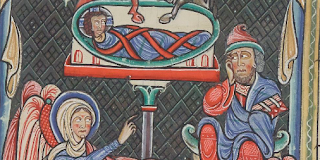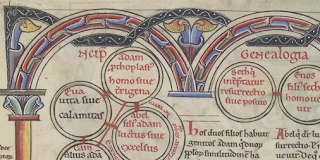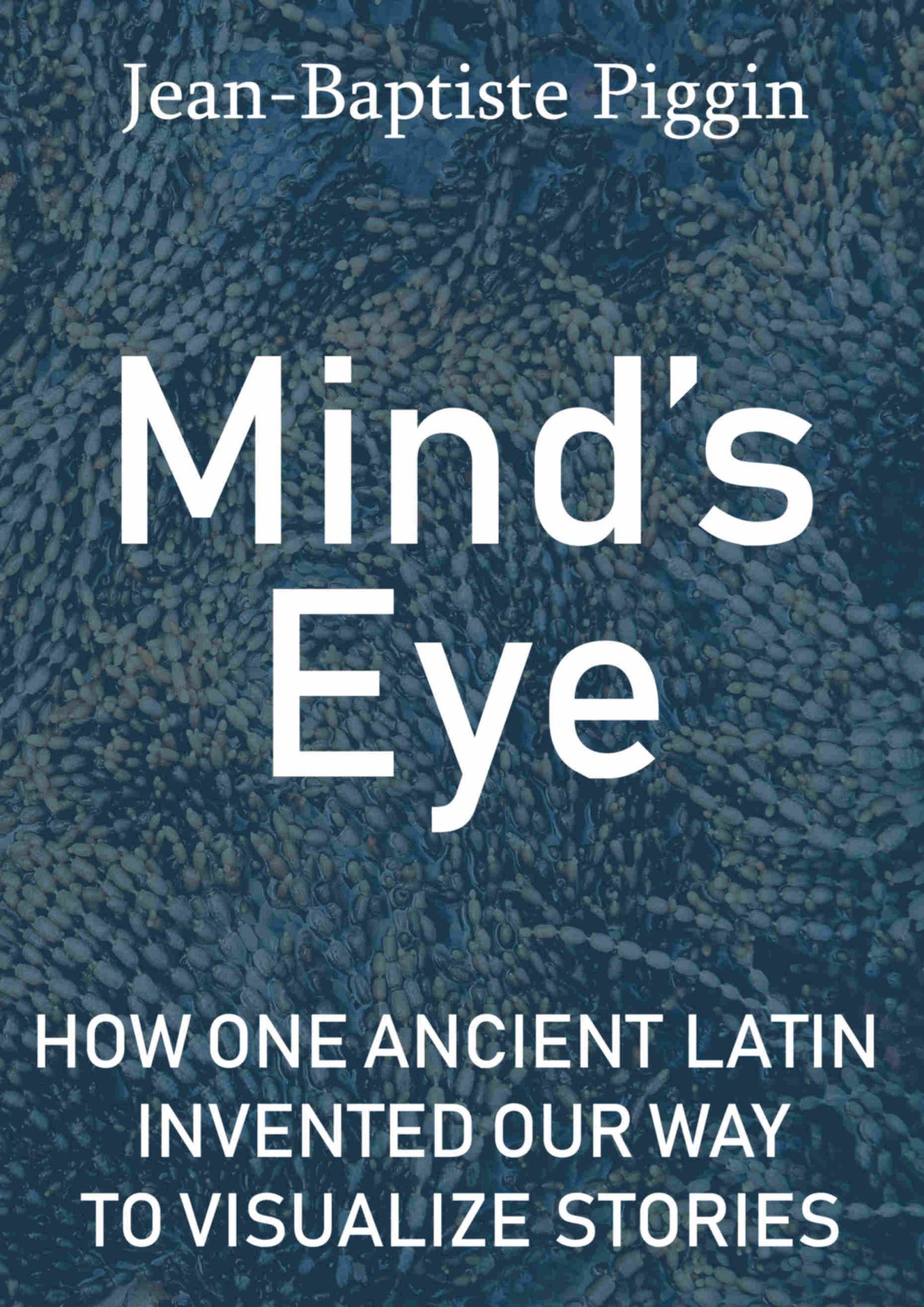A very special set of medieval bibles is complete at last, thanks to the recent digitization of the Foigny Bible in the French National Library, some of the best news of last year for codicologists.
These rare Vulgate bibles, one from Burgos in Spain and three from the Meuse Valley on the Franco-Belgian border, offer the sole surviving evidence of a shadowy struggle over belief in seventh-century Visigothic Spain.
Four years ago, I celebrated the arrival online of the Floreffe Bible (now in the British Library). Now the fourth and last is there to appreciate, the Foigny Bible, thanks to the Polonsky Foundation funding a project to virtually unite treasures of London and Paris that belong together. The illuminations in the Foigny Bible (here the Nativity) are wonderful:
Here are links to the whole set of four:
These rare Vulgate bibles, one from Burgos in Spain and three from the Meuse Valley on the Franco-Belgian border, offer the sole surviving evidence of a shadowy struggle over belief in seventh-century Visigothic Spain.
Four years ago, I celebrated the arrival online of the Floreffe Bible (now in the British Library). Now the fourth and last is there to appreciate, the Foigny Bible, thanks to the Polonsky Foundation funding a project to virtually unite treasures of London and Paris that belong together. The illuminations in the Foigny Bible (here the Nativity) are wonderful:
Here are links to the whole set of four:
- Parc Abbey Bible , London, British Library Add.Ms. 14788
- Floreffe Abbey Bible, London, British Library Add.Ms. 17737
- Burgos Romanesque Bible, Burgos, Biblioteca Pública deL Estado MS 173
- Foigny Abbey Bible, Paris, Bibliothèque Nationale de France, lat. 15177
The Foigny Bible starts off with a prologue set which is found in the others too, a fairly sure sign that all these 11th and 12th century bibles derive from a much earlier model:
- an arbor consanguinatis;
- the Great Stemma, with a 6,000-word epitome of exegesis by Isidore in the blank spaces;
- the Prologus Theodulfi
- a second Prologus (Stegmüller, Rep. Biblicum, n° 284).
- a second Prologus (Stegmüller, Rep. Biblicum, n° 285).
- a capitula
And what were the Visigothic Christians arguing about? Whether St. Joachim, the supposed grandfather of Jesus existed!
A late-antique "family tree" of Jesus, the Great Stemma (above), had been spreading through Iberia in the seventh century and it showed a legendary sheep-farmer, Joachim, in pride of place. Isidore of Seville thought this claim was nonsense. We don't know if Isidore himself altered the chart, but someone very smart and aligned with Isidore's thought took pen and rewired the "tree", cutting out poor Jo like a gastric bypass.
As for the 6,000 words of Isidorian Exegesis written in the gaps, you'll have to make up your own mind who wrote it. Maybe that was Isidore too? Since it had never been identified or published previously, I edited the text some years ago.




